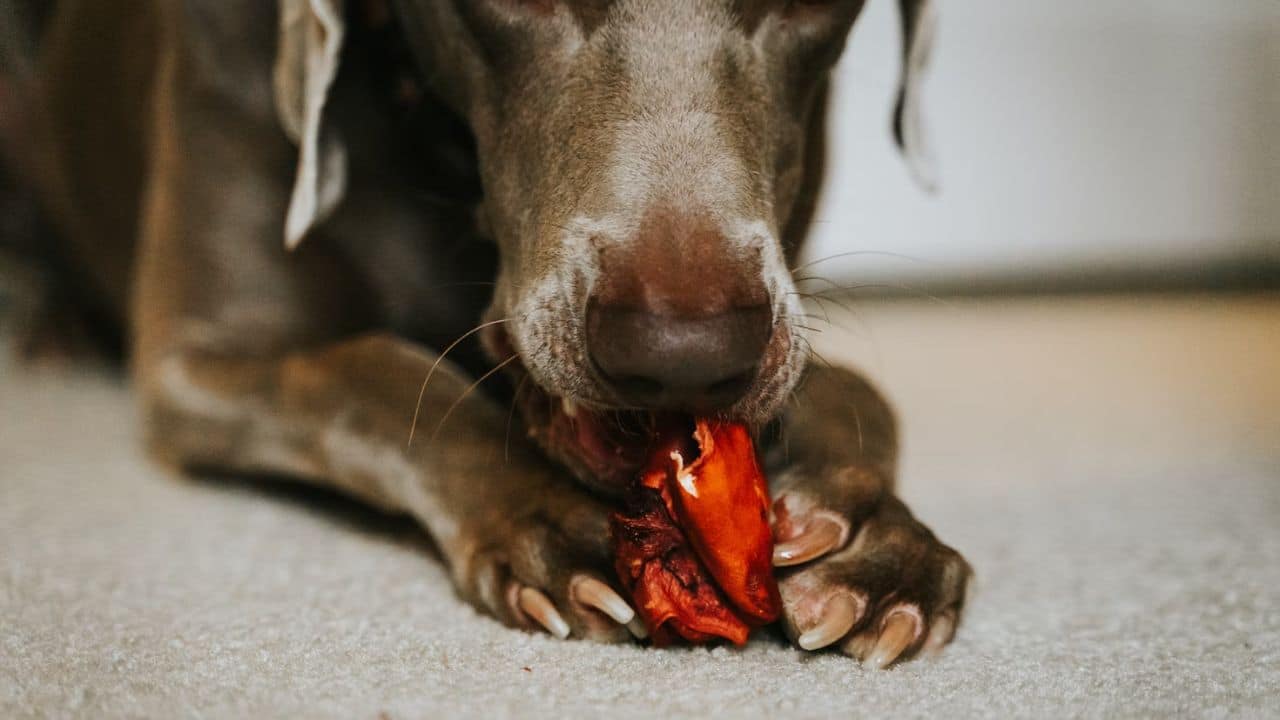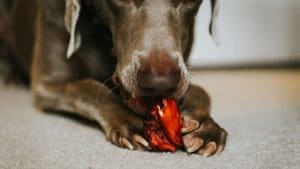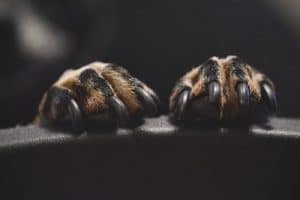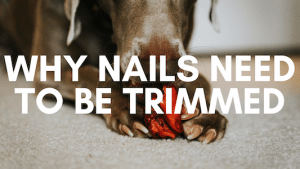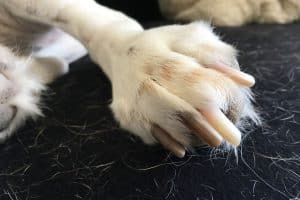I’m not gonna sugar-coat it – clipping your dog’s nails isn’t much fun for them or you. It can cause anxiety and turn into a drawn-out protest full of wiggling and escape attempts. And for pups and first-timers, it can even be frightening.
But there are no two ways: routine nail trimming is a necessary, long-term investment in your dog’s health and hygiene. On the other hand, nail neglect is a clear sign of future problems and unnecessary surgical expenses.
Cutting your dog’s claws is more than a cosmetic chore. Nor is it just a measure to prevent door scratches and other house damage. Unclipped toenails can cause pain, injury, and infection. Neglecting overgrown nails can put your dog at risk of orthopaedic and postural problems.
Let’s see how to make the grooming process much easier.
How to sedate an uncooperative / aggressive dog?
In the UK, a licensed veterinarian should only sedate a dog for nail clipping. They may use oral or injectable sedation and will determine the appropriate method and dose based on the individual dog’s size, age, and health status.
However, if you’re willing to use home remedies and other less potent options, you can sedate your dog at home. Here’s how.
NOTE: Make sure your dog is well-fed and healthy before you sedate him, or it could lead to other issues.
1. Antihistamines
Antihistamines (diphenhydramine) are designed for humans to treat the effects of allergies with one usable sideeffect – drowsiness. Benadryl and Nytol are example brands commonly used in the UK.
Suppose this is your first time. In that case, we recommend sticking with the 2mg or less. Make sure your pup has plenty of water and keeping a very close eye on them for a few hours after the dose and clipping.
2. Lavender
The scent of lavender can help calm your dog down and help them sleep. Add a tiny amount of lavender into their pre-nail clipping meal and rubbing some onto their necks.
Lastly, you can even use a spray with the scent around the room. It won’t sedate your dog much on its own. Still, lavender is perfectly safe and can boost the sedation effect of other methods.
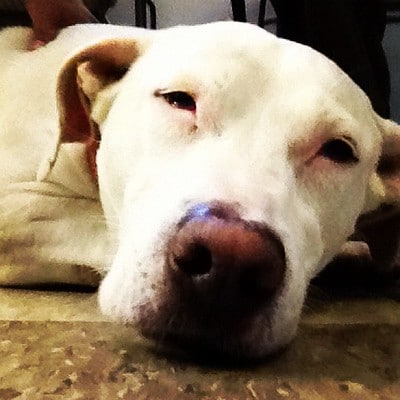
3. Herbs
Certain herbs have strong calming qualities which can help sedate a dog ahead of grooming. A selection of these herbs is chamomile, hops, valerian and catnip.
Mix a small amount of these into the food they eat not long before you cut their nails. Or, you can beginning the trimming process once the effects start to work.
I do NOT recommend using all 4 of these herbs simultaneously. One is fine. You don’t want them to overdose or ingest too much.
4. CBD oil
CBD oil or cannabidiol is scientifically proven to enhance well-being, reduce inflammation, and curb anxiety in dogs. It can help your dog relax before you clip their nails.
CBD oil is perfectly legal, so doses suitable for dogs can be purchased.
Read More: Why does my dog scratch the carpet at night? How to stop this behaviour?
5. Adaptil
Adaptil is a spray or diffuser that releases natural dog-calming pheromones into the air, which can relax and calm them very quickly over a short period. It’s safe to use and non-toxic. It’s actually one of the most common products in kennels and rescue centres.
It’s a little pricey, and there are some doubts about its effectiveness. There are also legitimate questions about side effects such as diarrhoea.
We’ve put it down at the bottom of the list because it’s expensive and a bit hit or miss with dogs in the UK. Some owners have reported side effects. For you, it could be the best thing or a total waste of money.
How to calm an uncooperative dog without sedation?
With patience, understanding and the right approach, nail clipping can be a relatively stress-free experience for the dog and the owner. Here are some suggestions that can help you in trimming the nails of an uncooperative dog:
1. Purchase and use appropriate tools.
When clipping your dog’s nails, the right tools can make all the difference. Choosing the right clippers that fit your dog’s nail size and thickness is important. An incorrect and dull blade may harm the dog and make them hurt the process.
2. Trim your dog’s nails at regular intervals.
Regular nail clipping can help your dog get accustomed to the process, reducing their resistance. It is important to start the clipping process early in a dog’s life to become used to it and reduce its resistance over time.
3. Play with your dog to tire them out.
A tired dog is less likely to resist and rebel when it’s time to clip its nails. Exercising the dog before the clipping session can help drain its energy, making them more relaxed and less likely to fight. You can take your dog for a walk, play fetch, or engage in any other physical activity that will tire them out.
4. Use positive reinforcement.
Positive reinforcement is a powerful tool that can make the dog interested in nail-clipping. Offer treats and praise during and after the clipping session to encourage the dog to associate the experience with positive things. You can also offer their favourite toys or games as a reward.
How much should you cut the nails?
Take note of the “quick” before clipping your dog’s nails. It’s a pink-coloured combination of the vein and nerve endings in your dog’s nails. You do NOT want to cut your dog’s vein accidentally.
1. How do I know where to clip my dog’s nails if they are light?
Cut your dog’s nails safely and away from the quick attached to their nail beds. If the nails are light-coloured, the quick is the pink subregion in the centre of the nail.
2. How do I know where to clip my dog’s nails if they are dark?
Cut your dog’s nails a bit farther from the quick, which is harder to identify for dark nails but not impossible. Look at the nail’s bottom while trimming to estimate depth from the nail bed – you’ll see a small oval there. Stop before the oval grows as wide as the nail itself.
How to trim your dog’s nails?
There are three ways through which your dog’s nails are trimmed or groomed:
- Natural abrasions that happen when walking through hard surfaces.
- Filing and grinding using tools.
- Cutting their nails with a clipper.
1. How to clip your dog’s nails?
Step 1: Make sure your dog is comfortable.
Before using dog clippers on their nails, get your dog comfortable with you holding their paws. Teach them to be still and patient. Sedation is an option if you’re struggling, but we’ll look into it later.
First comes the training. Hold your dog’s paws and see how they behave. If they don’t try and take it away and are happy with you handling it, praise them and perhaps give them a treat.
If your dog doesn’t like you holding their paws, first check to ensure there’s no health issue and second, treat them while the paw is in your hand. This makes dogs associate paw holding with treats, so it’s a positive experience.
Step 2: Choose the right clippers.
There are two types of clippers to cut your dog’s nails:
- Guillotine Clippers: They’re made from stainless steel and designed for smaller or medium-sized dogs. Guillotine clippers are generally sharper and clip the nails with a transversal cut.
- Scissor clippers: They’re designed for shaping the nails of larger dogs. Scissor clippers are ergonomically designed to be comfortable for the owner, so it’s convenient to cut while holding the large paws.
Step 3: Grab the paw and start clipping.
Hold your dog’s paws and isolate the toenail you want to clip. Locate the quick and then cut at an angle.
At this stage, the key is to get the angle spot on and just take a little bit off as a starter for ten. Hold on to your dog’s paw firmly but gently, praising them for every successful nail cut.
Read More: Best Dog Nail Clippers To Buy For Your Dog in 2023!
2. How to file your dog’s nails?
Step 1: Prepare their paws.
First, you gotta prepare your dog’s paws for filing, so nothing accidentally comes in the way. This means trimming excess hair between and around the toes.
Step 2: Isolate the toes.
Make your dog lie down or sit in a comfortable position where you can easily access their paws without too much discomfort. Spread the toes with your fingers so the friction doesn’t hurt somewhere accidentally.
Step 3: File the nails.
Use a hard file as dog nails are much thicker than human nails. A material like hard metal, ceramic, or glass would do the trick. Next, you just patiently file each nail manually.
Caution: The friction causes heat which may induce pain in the nail beds if continued for long without breaks.
3. How to grind your dog’s nails using Dremel Tool?
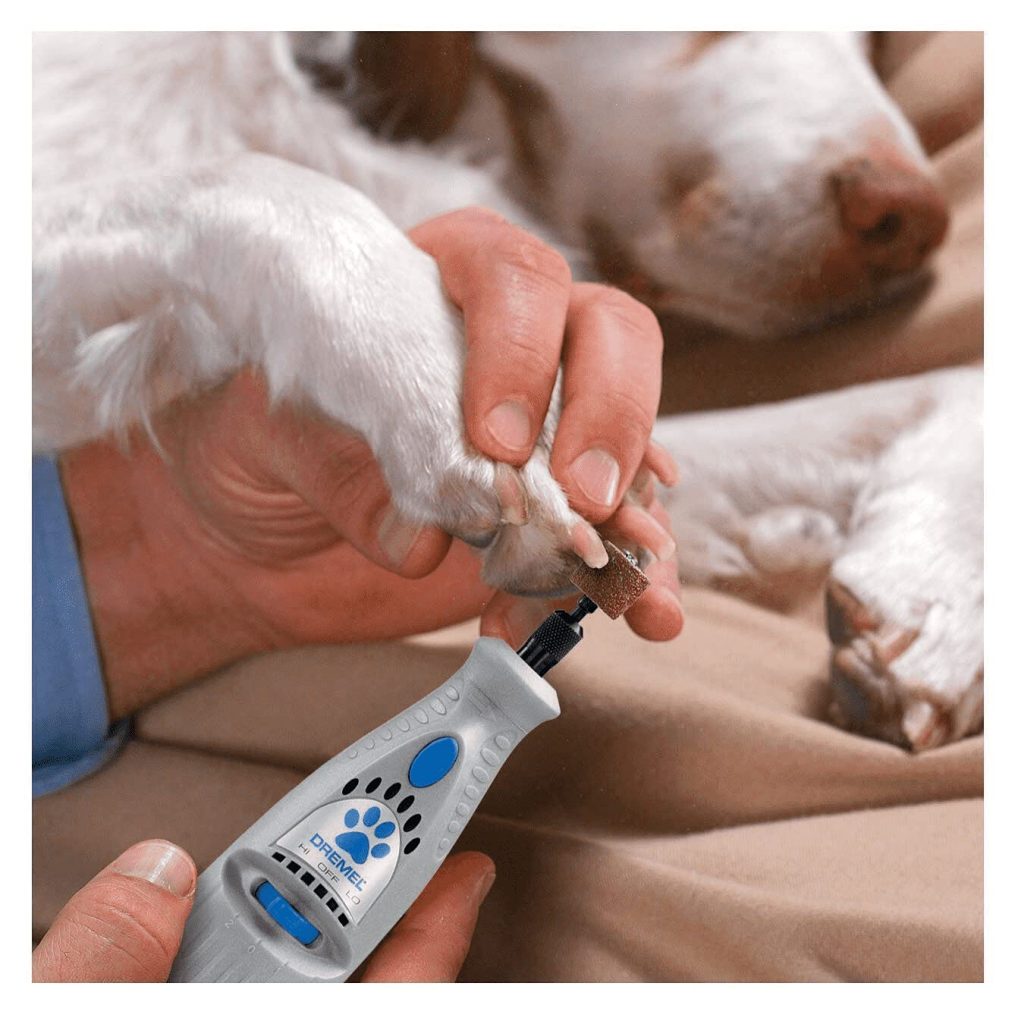
Another method is to grind your dog’s paws using the Dremel tool. It’s obviously faster and easier since you’re essentially using a grinder instead of going to and fro manually.
Although, an automatic grinder like this is still slower than clipping and produces a lot more heat. So, make sure you don’t accidentally overheat and hurt your dog’s toenails.
Step 0: Prepare your dog.
The Dremel tool produces noise and vibration, which may startle your pup and hurt the nail bed. Acclimate your dog to both those sensations before you actually start grinding.
Step 1: Prepare their paws.
First, prepare your dog’s paws for filing by trimming excess hair between and around the toes.
Step 2: Isolate the toes.
Make your dog lie or sit in a comfortable position where you can easily access their paws without too much discomfort. Spread the toes with your fingers so the friction doesn’t hurt somewhere accidentally.
Step 3: Grind the nails.
Follow the guide provided with the tool. Your grind by inserting the dog’s nails or putting them against the grinder (depending on the tool used). Don’t go too deep, or you’ll hurt the quick.
Is dog nail trimming necessary?
Trimming or cutting your dog’s toenails regularly is a necessity. Ignoring it could lead to several health issues. Just like our nails, dog nails constantly grow.
Dog nails constantly grow throughout their lifetime. Unless your house rules require your doggo to hunt for its own food in the wild, you’d be better off trimming them regularly.
1. What happens if I don’t trim my dog’s nails?
If you don’t cut your dog’s nails regularly, they overgrow, which is a big issue. The quick also lengthens with overgrown nails. At worst, the quick doesn’t stop growing and reaches the tip of the toenail.
Once this happens, forcing the quick to recede into the nail bed is a painful and gradual task. It’ll require the help of a veterinarian or professional groomer more than just a couple times.
2. Do long nails on a dog hurt?
They do much more than just hurt your doggo.
- When long nails touch the ground, they can create uneven pressure on your dog’s paw and nail bed. If this prolongs for a long time, it could flatten or splay their paws.
- Overgrown quicks can cause infections.
- It could cause skeletal abnormalities in the future.
- The paw pads (see also ‘What Should You Do With A Dog’s Paw Pad Injury?‘) or toe joints become uncomfortable.
- In serious cases of canine neglect, overgrown nails eventually curl around and could puncture the paw.
How can I keep my dog’s nails short without clipping them?
You can’t shorten your dog’s nails immediately because of the quick. But you can keep them short by making the quick recede into the nail bed gradually. After that, you’ll have more area to clip off or file without the quick’s obstruction.
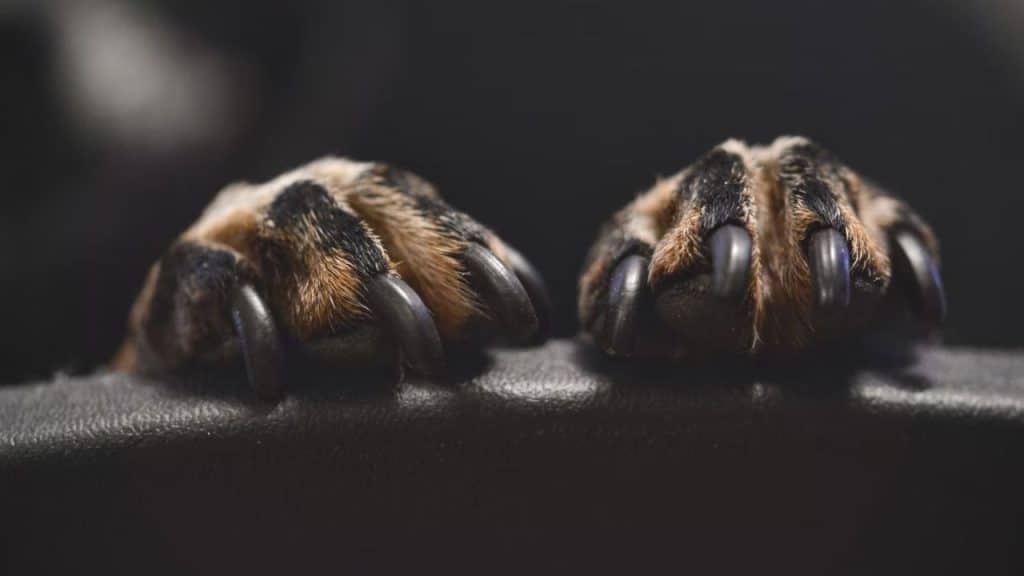
So, how do you force the quick into receding? Before jumping to conclusions, let me restate that cutting the quick is not an option.
The solution is to give your doggo frequent nail trims and ensure they’re actively walking and playing outside.
When you clip their nails for the first time, do it as closely to quick as safely possible. In the next few weeks, clip the nails every time they start growing back, but each time you clip a little further (still within a safe distance). This forces the quick to recede into the nailbed gradually.
After some time, your doggo will run around and enjoy short nails without pain in the nail beds. And just so you know, this works both ways – if you let your dog’s nails grow a lot, the quick also gradually comes out.
Note: The time it takes for the quick to recede differs for each dog, so be patient. Like humans, the speed at which toenails grow is variable for dogs because of factors like age, activity, genes, etc.
Read More: How to get rid of ticks from dogs, carpets & your home.”
What to do if you do cut the quick?
If you accidentally cut the quick on your dog’s nails, don’t panic and get ahead of the situation.
First, ensure you have a visual confirmation of the appearance of the blood. Depending on how much of the quick you’ve nicked, it’ll range from a lot of blood to barely noticeable.
Next, use styptic powder. It can stop the bleeding almost instantly and provide some pain relief for your pooch’s poor nails.
- Powerful agents work to help stop bleeding immediately
The “Other Questions” You Must Have Answers For
1. Does walking your dog trim their nails?
As a matter of fact, it does. But it isn’t an ideal choice.
Walking your dog on hard surfaces (like concrete) trims dog nails, but it’ll hurt. The hard surface pushed the nail against the nail bed. Ideally, trim your doggo’s nails frequently if they go out to play a lot.
2. What is the best way to trim dog nails?
Whether to cut or grind / file for toenail grooming depends on your dog. While filing dog nails feels safer (it protects the quick), it’ s a long process that produces heat and might make your dog very uncomfortable. Cutting is an obvious choice for longer nails.
3. How long should dog nails be?
According to The National Search and Rescue Dog Association (NSARDA), your dog’s toenails should be long enough to help them climb and dig but short enough to not touch the ground when standing straight and firm on a level surface.
A pretty straightforward sign of overgrown nails is if the nails are hitting the floor or causing discomfort.
4. How often should you trim your dog’s nails?
You should trim / clip your dog’s nails as frequently as required. The exact frequency is different for each dog. You’ll have to take an educated guess using visual data (length of nails, visible discomfort, prior knowledge).
Read More: How To Build A Dog Nail Scratchboard
5. What do vets use to trim dogs’ nails?
Veterinarians and professional groomers use bypass clippers specifically made for dog nails, thicker than human nails. They administer a drog called Acepromazine to sedate and calmly clip the nails of an uncooperative dog.
Another option is to use a guillotine clipper. But most vets stick with bypass only.
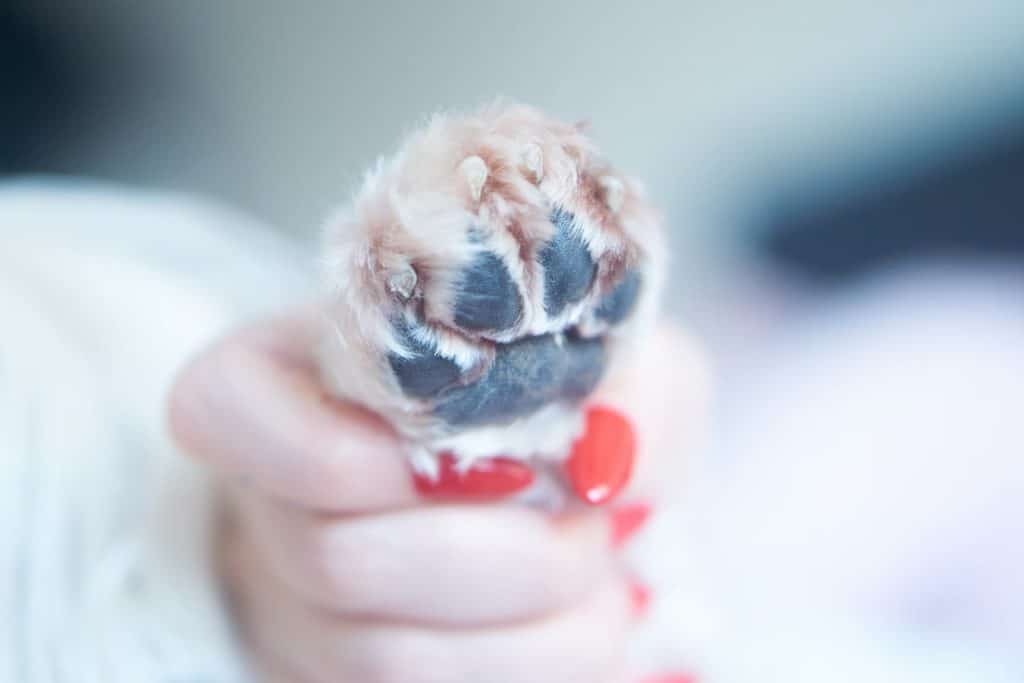
6. Can I get my dog sedated for nail clipping?
You can sedate your dog for nail grooming. This may be a good option for restless and uncooperative dogs to prevent unwanted injury.
Consider one of the many over-the-counter drugs (even Benadryl) to sedate your dog for their nail clipping session. This calms their nerves and makes them comfortable. Alternatively, depending on your dog’s weight, you can pay about £35 to £80 or professional sedation.
7. How much Benadryl (or another antihistamine) can I give my dog to sedate?
According to The Merck Veterinary Manual, don’t give your dog more than 2-4 milligrams of Benadryl per kilogram of body weight when sedating them for nail clipping. For example, a 20kg dog needs 40-80mg of Benadryl for sedation.
Depending on how big your dog is, you may have to break a pill into smaller pieces.
8. Why does my dog scream when I cut his nails?
When grooming, your dog may scream, whine, or bark for several reasons. If you’re clipping correctly, anxiety is the culprit. Some pain could be the issue if their nails are overgrown. Worst case, your doggo is screaming because you nicked the quick.
Last update on 2024-06-29 / Affiliate links / Images from Amazon Product Advertising API
